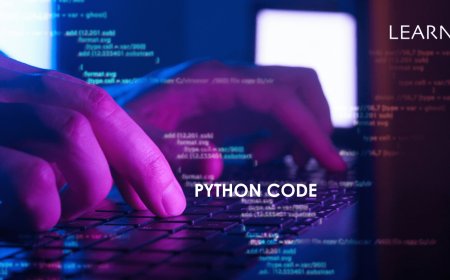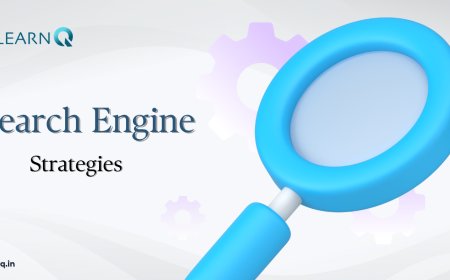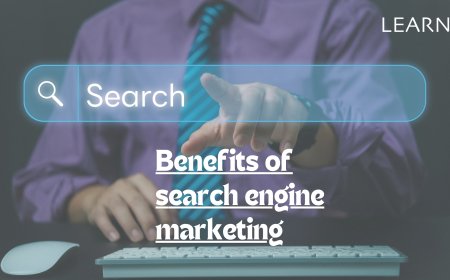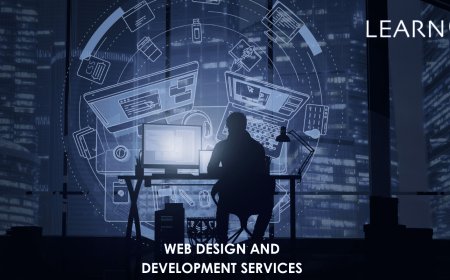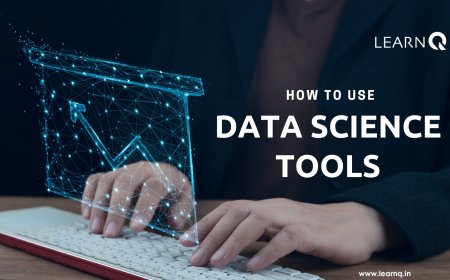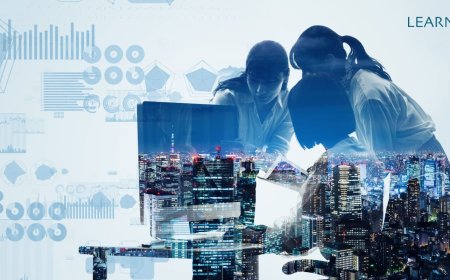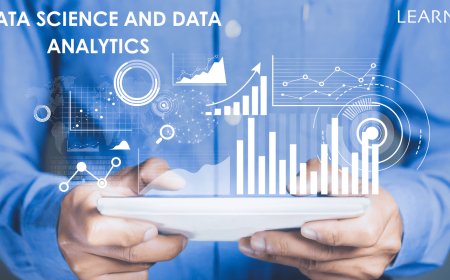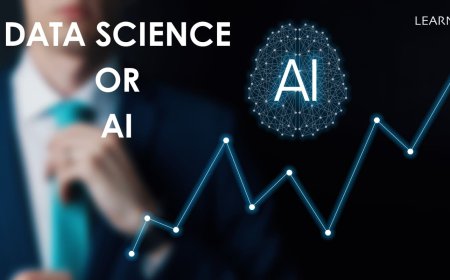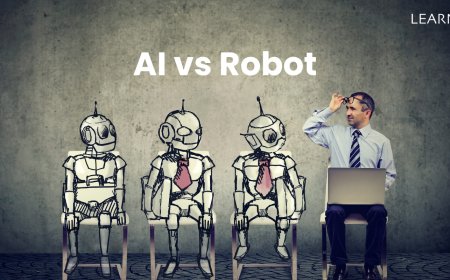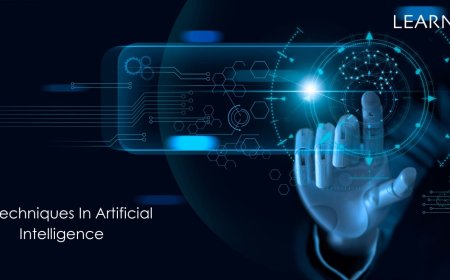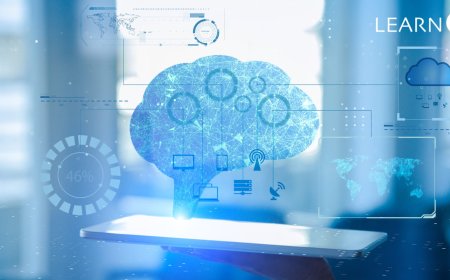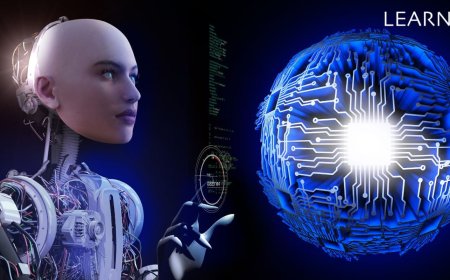Artificial Intelligence (AI) is like a super-smart computer buddy changing everything around us. AI means teaching machines to think and learn like humans. It's made up of a bunch of cool tech stuff like machine learning, robots, deep learning, and understanding human language. AI helps computers do things that only humans used to be able to do, like learning from mistakes and solving tricky problems all on their own. Machine learning, which is a part of AI, lets computers learn from their experiences without needing someone to teach them every little thing. This helps them analyze big piles of data and find important stuff super quickly and accurately.
Robots with AI can do all sorts of things by themselves, like working in factories or helping out in hospitals. Deep learning is another cool part of AI that helps computers understand complicated stuff and make smart decisions, like how humans do. And natural language processing helps computers understand and talk to us in a way that feels natural. AI is everywhere these days! You've probably used AI without even realizing it, like when you talk to your phone's virtual assistant or see self-driving cars on the road. It's also helping doctors diagnose diseases and find new medicines, and it's making finance smarter by helping with things like trading stocks and managing risks. And that's not all – AI is also being used in education, farming, and protecting the environment to improve the world.
The Foundations of Artificial Intelligence
Artificial Intelligence (AI) is all around us, making things like Digital assistants and smart algorithms work. Let's break down the basics of AI, exploring what it's made of and the important parts that make it smart.
Understanding AI:
AI is like a smart friend for machines. It helps them learn, think, solve problems, understand things, and even talk like humans. This technology allows machines to look at data, figure things out, and do tasks that usually need human brains.
Key Components:
1. Machine Learning (ML): This lets machines learn from information without someone telling them exactly what to do.
2. Neural Networks: These are computer models inspired by how our brains work, especially important for deep learning.
3. Natural Language Processing (NLP): This helps machines understand and talk in human language.
4. Computer Vision: It allows machines to see and understand visual info from the real world.
5. Robotics: Combines AI, learning, and machines for smart robots.
Foundational Principles:
1. Data: Good, different, and labeled datasets are super important for training smart AI models.
2. Algorithms: These are like the brains of AI, deciding how machines process info and make choices.
3. Computational Power: Better computer hardware helps AI models learn faster and smarter.
4. Ethics and Bias: Thinking about fairness, privacy, and doing AI in a good way is important.
Future Directions:
AI's future is about being clear, dealing with ethical concerns, working together with humans, and using AI to make the world better.
Exploring How Computers Learn: Machine Learning Algorithms
In computer smarts, there are special tricks called Machine Learning (ML) algorithms. These tricks are like the brains behind smart systems, helping computers learn and decide things on their own. Let's look at some of these cool tricks:
1. Smart Learning with a Teacher (Supervised Learning):
-
Imagine a computer learning from a labeled book – that's what supervised learning is like. The computer learns to connect the dots between input and output, helping it solve problems like sorting and predicting.
2. Finding Patterns on its Own (Unsupervised Learning):
-
Now, if the computer explores an unlabeled book and finds hidden patterns, that's unsupervised learning. It's like discovering groups and simplifying things without knowing the answers beforehand.
3. Learning by Earning Points (Reinforcement Learning):
-
This trick is inspired by games. The computer makes decisions to get more points in its game environment. It's used in gaming, robots, and making things work better.
4. Super Smart Deep Learning:
-
Deep learning is like having a super-smart computer with many layers. These layers help it do advanced tasks like recognizing pictures, understanding speech, and talking like a person.
5. Thinking Like a Brain (Neural Networks):
-
Picture a computer that thinks like a brain. Neural networks are like interconnected brain cells, helping computers recognize patterns. They're behind cool things like telling what's in a picture or driving a car on its own.
Natural Language Processing (NLP)
Computers are getting better at understanding how we talk. Natural Language Processing (NLP) is a cool part of computer science that's making this happen. It's like teaching computers to understand and talk like humans. NLP does lots of neat stuff. It helps computers understand what we mean when we say things, translate languages, recognize speech, and even summarize long texts. The best part is, that it can do this with messy, unorganized information like articles or social media posts.
To make all this work, NLP uses different techniques. There's stuff like machine learning, where computers learn from lots of examples. They also use deep learning, which is like super-smart computer networks. These technologies help NLP understand and generate language better.
Some famous NLP models, like GPT and BERT, are good at understanding and generating human-like language. They can translate languages and even answer questions almost as well as people. But NLP still has some problems to solve. Sometimes, it's hard for computers to understand what we mean because words can have different meanings depending on the situation. Plus, there can be biases in the data they learn from. Even with these challenges, NLP is making a big impact in many areas like healthcare, finance, and customer service. It's making it easier for us to talk to computers and get things done faster and easier. And as it keeps getting better, who knows what else we'll be able to do with it?
Understanding Computer Vision
Computer Vision is a big deal. It's like magic for machines, helping them understand and make sense of the visual stuff around us. This technology is super cool and is changing the game in many areas, like self-driving cars, medical tools, security systems, and even cool things like augmented reality. Computer Vision does lots of tasks, each with its special job in understanding and studying visual data. Object Detection is like the superhero, finding and pinpointing objects in pictures or videos. This is important for things like self-driving cars and security cameras. Then there's Image Classification, which is about sorting pictures into different groups, so machines can spot patterns and make smart choices.
How Robots and Automation Are Changing Industries
In the fast-changing world of technology, robots, and automation are becoming super important in many different industries.
-
Self-Driving Cars: Cars that can drive themselves using fancy sensors and smart computer programs are changing how we travel. They make trips safer and smoother without needing a human driver.
-
Robots in Factories: Robots are taking over jobs in factories. They help make things more precise and safe, and they can do dangerous tasks so humans don't have to.
-
Automatic Office Work: Businesses are using computer programs to do boring, repetitive tasks automatically. This means people can focus on more important stuff.
-
Working with Robots: Scientists are figuring out how to make robots work well with people. They're designing robots that can understand what we want and help us do things better.
-
Swarm Robots: Inspired by how animals work together, scientists are making groups of simple robots that can work together on big tasks. They could be really useful for finding people in emergencies or keeping track of the environment.
The Potential of AI Tools
Technology is always changing. One big change is Artificial Intelligence (AI). AI is like a smart tool that can solve big problems and change the way we do things. To understand AI better, let's talk about the main things you need to know.
1. Programming Languages for AI: There are two main languages for AI: Python and R. Python is great because it can do many things and has lots of helpful tools. R is good for looking at data and making graphs, which is useful for certain AI stuff.
2. AI Frameworks: To make AI, you need something called a framework. The best ones are TensorFlow and PyTorch. They help you build smart things, especially things that learn from data. Another helpful tool is sci-kit-learn, which makes it easier to do machine learning.
3. Model Deployment and Scalability: Once you make something with AI, you need to make sure it works well and can be used easily. Docker helps with this by keeping everything together neatly. Kubernetes helps too by making sure your AI stuff can work on many different machines without problems.
4. Cloud-based AI Services: Big companies like Amazon, Microsoft, and Google have special places called the cloud where you can do AI stuff easily. They offer services like SageMaker and Azure AI that make it easier to train your AI and use it without worrying about the technical stuff.
5. Edge Computing in AI: Sometimes, you want AI to work on small devices like phones or gadgets. Edge computing helps with this by making AI work closer to where the data is. Tools like TensorFlow Lite and OpenVINO make AI work well on these small devices.
Domains of AI
AI, or Artificial Intelligence, is making a big impact in different areas of our lives. It's changing how we do things in healthcare, finance, education, and business. Let's take a closer look at how AI is making a difference in these different parts of our lives.
AI in Healthcare:
In healthcare, AI is helping doctors and nurses by improving how they diagnose and treat patients. Machines using AI can look at medical pictures to find diseases early, and AI can also understand and process what doctors write about patients. Some examples of AI in healthcare include IBM Watson Health and Google's DeepMind Health, which help doctors make better decisions and improve patient outcomes.
AI in Finance:
In finance, AI is being used to look at a lot of information to predict what might happen in the stock market. It's also helping manage risks and make better investment choices. Some AI systems in finance work quickly to buy and sell stocks, and some robo-advisors use AI to give personalized advice to people who want to invest. Companies like AlphaSense use AI to go through financial documents and find important information to help financial professionals make better choices.
AI in Education:
In education, AI is changing how students learn. Smart tutoring systems can change how they teach based on how well each student is doing. Virtual classrooms let students learn from anywhere. Apps like Duolingo and Coursera use AI to make learning more fun and interactive for people all over the world.
AI in Business:
In business, AI is helping make things run smoother. Chatbots give instant help to customers, and AI can predict what products people might want to buy. Big companies like Amazon and Netflix use AI to understand what customers like and give them better recommendations. This makes customers happy and helps businesses make more money.
Understanding AI Governance and Rules
Artificial Intelligence (AI) is everywhere, from healthcare to finance to transportation. But with its growth comes big challenges. We need clear rules to make sure AI is used safely and fairly. Let's look at the important parts of these rules. First, we have to protect people's privacy. AI often uses personal data, so we need strong rules to keep that data safe. Next, we need to keep data secure. This means using good methods to encrypt data, store it safely, and control who can access it. Following rules and regulations is crucial. Laws like GDPR in Europe and CCPA in the US help keep AI use fair and legal. Protecting intellectual property is also important. We need to make sure that creators are rewarded for their work and that new ideas can keep coming. Finally, we need to work together internationally. By sharing knowledge and agreeing on common rules, we can make sure AI benefits everyone.
Exploring New Emerging Technologies in AI
Artificial Intelligence (AI) is getting better and better, and some cool new technologies are changing the way AI works. Let's take a look at a few of them:
-
Quantum Computing: This is super-fast computing that uses the weird rules of quantum physics to solve really hard problems. It's like a huge jump in computer power that could help AI do things it couldn't do before.
-
Neuromorphic Computing: This is where computers try to work more like our brains. They use networks of tiny "neurons" to process information, making them smarter and more efficient.
-
Swarm Intelligence: This is inspired by how groups of animals, like bees or ants, work together. AI systems can learn from this and become better at making decisions and solving problems.
-
Augmented Intelligence: Instead of replacing humans, this kind of AI helps them do their jobs better. It's like having a smart assistant that makes you more productive.
-
Edge AI: This brings AI closer to where the data is collected, making it faster and more efficient, which is important for things like self-driving cars and smart gadgets.
The Future Trends in AI: What's Coming Next
Artificial Intelligence (AI) is getting better and better all the time, and it's changing the way we do things. Let's take a look at some cool new trends that are going to shape the future of AI.
1. Making AI Understandable: AI systems are getting complex, so we need to be able to understand how they make decisions. Explainable AI is all about making AI more transparent so we can trust it more.
2. Learning Together: Instead of one big computer doing all the work, federated learning lets lots of smaller computers work together. This means they can learn without sharing all their secrets, which is great for privacy.
3. Quantum Computers and AI: Quantum computers are super powerful computers that can help AI do even more amazing things. They'll help us solve really hard problems much faster.
4. AI Everywhere: AI isn't just in big computers anymore. Now it's in all sorts of devices, like your phone or even your toaster. Putting AI in these devices makes them work better and faster.
5. 6G and AI: The next generation of the internet, called 6G, is going to be super fast. This will make it even easier for AI to connect to everything around us, like self-driving cars and smart cities.
6. Mixing Brains and Computers: Neuro-symbolic AI combines two different kinds of AI to make one really smart system. It's like combining logic and pattern recognition to make AI even better at understanding things.
Artificial Intelligence (AI) is a cool innovation that's changing a lot of things. It's making industries better, changing how we do things every day, and opening up tons of possibilities for the future. AI does cool stuff like learning from data, using robots, understanding language, and more. As people start using AI in different areas of life, it's important to think about how it affects ethics, society, and the economy. We need to use AI in a way that helps everyone and doesn't cause problems. If we use AI to solve big global problems and make life better for people, we can make the most out of this awesome technology. This way, we can make the future brighter and more connected for everyone.
